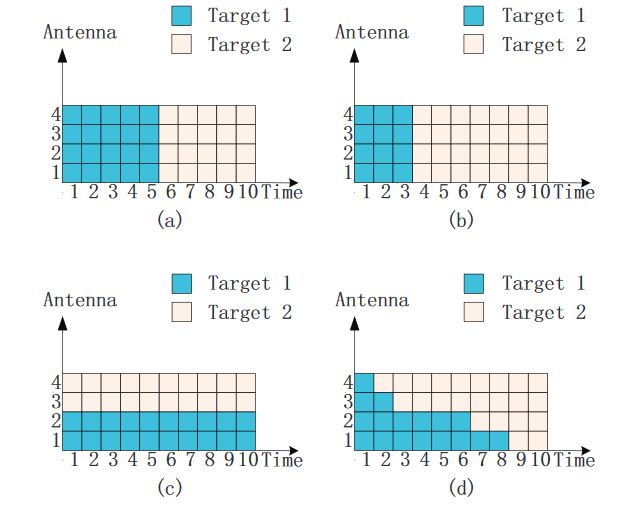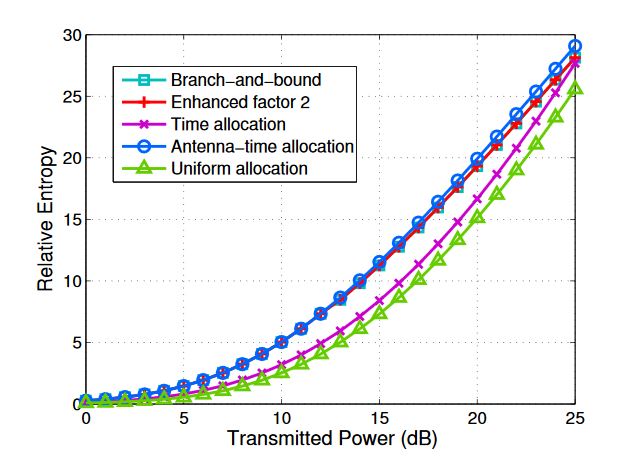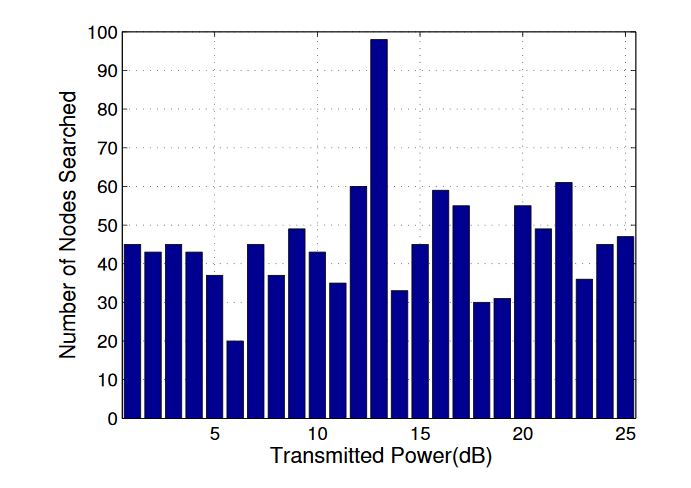ABSTRACT
In this paper, we explore a new resource called multi-target diversity to optimize the performance of multiple input multiple output (MIMO) radar with widely separated antennas for detecting multiple targets. In particular, we allocate antennas of the MIMO radar to probe different targets simultaneously in a flexible manner based on the performance metric of relative entropy. Two antenna allocation schemes are proposed.
In the first scheme, each antenna is allocated to illuminate a proper target over the entire illumination time, so that the detection performance of each target is guaranteed. The problem is formulated as a minimum makespan scheduling problem in the combinatorial optimization framework. Antenna allocation is implemented through a branch-and-bound algorithm and an enhanced factor 2 algorithm. In the second scheme, called antenna-time allocation, each antenna is allocated to illuminate different targets with different illumination time.
Both antenna allocation and time allocation are optimized based on illumination probabilities. Over a large range of transmitted power, target fluctuations and target numbers, both of the proposed antenna allocation schemes outperform the scheme without antenna allocation. Moreover, the antenna-time allocation scheme achieves a more robust detection performance than branch-and-bound algorithm and the enhanced factor 2 algorithm when the target number changes.
PROBLEM FORMULATION
Assume that the entire search area of the space is divided into K target cells, where each cell contains either one or zero targets. Whether there is a target in a certain cell is independent of that in other cells. We consider a MIMO radar consisting of M transmit antennas and N receive antennas. Each transmit antenna is able to steer its beam independently to illuminate any of the target cells.
ANTENNA ALLOCATION SCHEMES

Figure 1. An intuitive explanation of four different illumination schemes: (a) uniform allocation; (b) time allocation; (c) antenna-only allocation and (d) antenna-time allocation
Figure 1 shows an intuitive explanation of four different illumination schemes in a two-target detection case. Four transmit antennas are utilized in total, and the illumination time is the length of ten signal pulses. Figure 1a shows the illumination via uniform allocation. The uniform allocation is a general method that employs all four antennas to sequentially illuminate targets one by one. It can just be regarded as the conventional single-target detection scheme. The time for Target 1 equals that for Target 2.
NUMERICAL RESULTS AND ANALYSIS

Figure 2. Minimum relative entropy of targets versus transmitted power via branch-and-bound algorithm, enhanced factor 2 algorithm, the time allocation scheme, the antenna-time allocation scheme and the uniform allocation scheme
Figure 2 shows the minimum relative entropy of all targets versus 0–25 dB transmitted power via different schemes. It can be observed that the relative entropy of the schemes that we propose outperforms that of uniform allocation and time allocation. It is obvious that uniform allocation is the worst, since it does not use any optimization.

Figure 5. The antenna allocation results via the antenna-time allocation scheme in the scenario of Figure 2
Figure 5 shows the antenna allocation result in the scenario of Figure 2 via the antenna-time allocation scheme. Figure 5a–d shows the antenna allocation results at the transmitted power of 5 dB, 10 dB, 15 dB and 20 dB, respectively. It can be seen that as the transmitted power grows, the illumination time of Antenna 1 for Target 1 increases unceasingly till it occupies the total time. Antenna 4 does not illuminate Target 1 in the low transmitted power region.
CONCLUSIONS
In this paper, a multi-target detection problem for MIMO radar with widely separated antennas is investigated based on relative entropy. In order to explore multi-target diversity, we propose the antenna-only allocation scheme and the antenna-time allocation scheme to implement multi-target detection simultaneously. In the antenna-only allocation scheme, we use a branch-and-bound algorithm and an enhanced factor 2 algorithm, respectively.
In contrast to sequential illumination without antenna allocation, simultaneous illumination via antenna allocation can increase illumination time at the expense of decreasing the number of illumination antennas for each target. It is shown that proper antenna allocation outperforms time allocation and uniform allocation over a large range of transmitted power, RCS fluctuations and target numbers. Moreover, the antenna-time allocation scheme can achieve a more robust performance than branch-and-bound algorithm and enhanced factor 2 algorithm for more targets.
Source: Tsinghua University
Authors: Hao Gao | Jian Wang | Chunxiao Jiang | Xudong Zhang